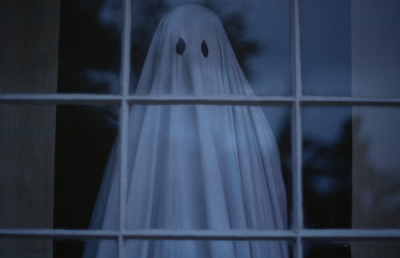An Interview with Masaaki Yuasa
Fantasia 2017
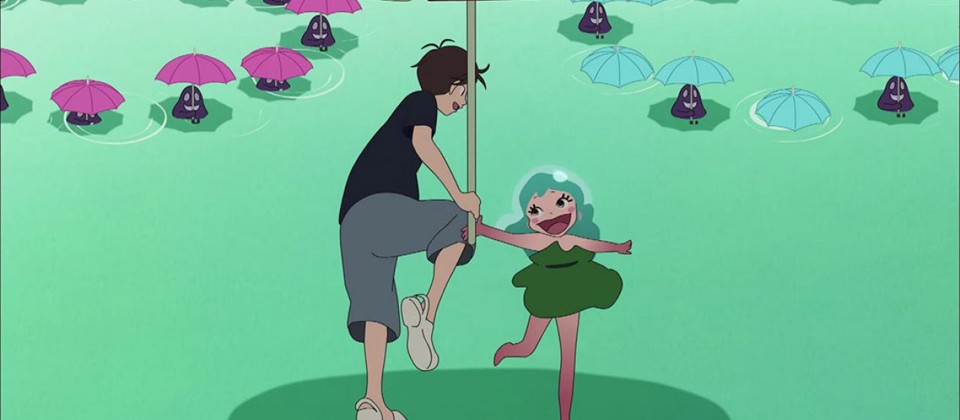
This year’s Fantasia saw the long-awaited return to the feature film format of one of the most singular and exciting voices in the world of contemporary Japanese animation; a return that saw not one but two films bless the screens of Montréal, the Tomihiko Morimi adaptation The Night is Short, Walk on Girl and the Annecy-winning Lu Over the Wall. Many will remember the bolt of lightning that was Yuasa’s last film, Mind Game, shown at Fantasia in 2004, a genre-bending visual mind trip to the afterlife that name-checked everything from Buddhism to the Biblical tale of Jonah and the whale in its frantic race to reunite two lost souls. That film’s post-modern collage aesthetic and pulse-pounding rhythm still stands tall in the history of the festival —a UFO that arrived at a time when movies could still surprise people— and of the anime medium itself.
There wasn’t only radio silence from Yuasa between Mind Game and this year’s double-bill. The director brought his unique sensibility and chameleon visual style to television, delivering classics like Kaiba (2008), The Tatami Galaxy (2010) and Ping Pong: The Animation (2014), which showcased his personal sense of space and movement for a new audience.
His two new films find the director, now something of a mentor figure in the world of animation, having opened his own studio, Science Saru, in 2014, and ready to revisit some of his thematic and formal ideas. Lu Over the Wall sees Yuasa return to flash animation, a technique he had first used extensively in Ping Pong: The Animation, while The Night is Short, Walk on Girl marks a return to the visual style of The Tatami Galaxy, which is appropriate, since both are adaptations of the work of Tomihiko Morimi. Both films also reunite us with the quintessential Yuasa hero, the aimless young man undone by his own fear and weaknesses, but, as always, with the director broadening the narrative scope to allow a large cast of misfits to each get their due (Lu Over the Wall’s climax contains three mini-climaxes for characters who had until then seemed like throwaway jokes or archetypes). The new films also highlight the director’s signature subjective use of space and movement, presenting us with visions of twisted locales and impossible bending bodies.
Lu Over the Wall, the story of Kai, a laconic teen in a small fishing village who is shaken out of his languor by the arrival of a small singing mermaid (Lu), skews younger with its fairy-tale like story, but is no less thematically complex and no less joyous in its moments of climactic abandon as the rest of Yuasa’s work. As always, the animation is gorgeous, showcasing Yuasa’s knack for fluid movements and impossible set pieces as well as his palette of deep, intense primary colours. Lu is less relentless in its pacing than some of his other films, preferring to ease in to what is perhaps his most realistic setting (as much as this adjective makes sense when dealing with mermaids and sea kings) since Ping Pong. The film’s early, more grounded, scenes allow the director to focus on Kai and convincingly portray his aimless response to the lack of opportunity in his village and his difficult home life.
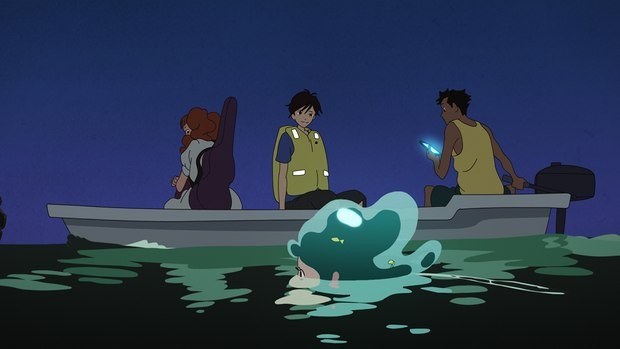
Lu Over the Wall
However, this being a Yuasa film, it is not long before colour, movement and fantasy creep into the picture in the form of a cute little sea creature. If the themes seem a bit clichéd, fitting more easily into a tradition of children entertainment that emphasizes friendship and overcoming obstacles in acts of heroism and spectacle, far from the sobering realisations of one’s own limits found in Ping Pong, then at least Yuasa makes sure to push this spectacle to a paroxysm of balletic action. To call it a climax would risk falling into euphemism, such are the final scenes of a film filled with flights of fancy, explosions of colours, bursts of emotions, and moments of pure kinetic beauty.
The Night is Short, Walk on Girl reunites us with the Yuasa that people are perhaps most familiar with, as it possesses the same similar frenetic rhythm as Mind Game and shares a visual style with The Tatami Galaxy. Following the adventures of a hopelessly in love university student over a wild night that seems to stretch on for years (seasons change, people get sick, etc.) as he tries to win the heart of the girl of his dreams, it also makes space for endless detours and incursions into the worlds of guerrilla theater and rare book collecting, among others. The narrative effect is sort of like watching a mad race taking place all over a city as characters flicker in and out of the action, each lending scenes their off-kilter charm, and finishing with a triumphant dawn. The experience is akin to blending all your nights of depraved drinking into a single, weaponized, super-anecdote.
The Night is Short, Walk on Girl is a film bursting with creative energy. This fun, go-for-broke, attitude extends to the visuals, which never stay in place very long as they jump from distorted realities to silhouetted explosions of primary colours to visual metaphors of self-doubt. The Night is Short, Walk on Girl shows a world where gods mingle with humans, where bodies rarely, if ever, stay anatomically correct, and where love can make you run 100 miles an hour. The effect could be tiring if it wasn’t so exhilarating, if every second didn’t bring a new, beautiful image, joke or idea that can only be quickly registered before the next one jumps on the screen.
What both films showcase is a willingness to always invent, to never stick to old ways, and to surrender oneself to the power of subjective experience. In their mad swirl of colour, movement and sound, the films approach a kind of ground zero of animation as pure moving forms, making their points in the chaotic interaction of lines and colour.
I had the chance to interview Masaaki Yuasa, who visited Montréal to present his two new films at Fantasia. Yuasa, a humble-looking man wearing a beanie and carrying a plush toy from The Tatami Galaxy around his neck, was kind enough to answer some questions about his career, his pair of new films and his vision of animation. I thank Yuasa for his time, Fantasia for making this interview possible, and Hidetaka Yoneyama for his invaluable help in translating our discussion.
Offscreen: Your last feature was Mind Game in 2004, which was a real success at Fantasia, and now you release two films at the same time. Is this a way to make up for lost time?
Masaaki Yuasa: It’s more a question of timing, since after Mind Game I wanted to work in television. I had many offers to make films, but nothing came of these. When I had the opportunity to make Lu, someone also offered to produce Night is Short, and I thought I had to take the chance or I might miss the opportunity to make another film. Right after Lu, I started work on Night is Short, but Night is Short came out first.
Offscreen: Can you talk about the production? Did you work on both films simultaneously, or is it a coincidence that both films are released in the same year?
MY: There was an opportunity to make an entirely original film with Fuji television, but I thought if I made a film from an original idea, maybe not many people would see it. So maybe it would be a good idea to start with an adaption and then release an original film. There was only 50 days between the release of the two films.
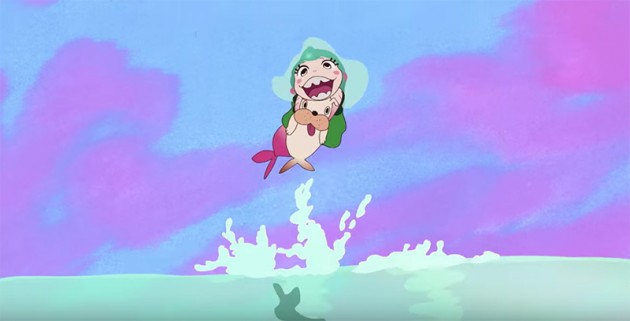
Lu Over the Wall
Offscreen: With Lu Over the Wall, you made an entire feature using flash animation. What was it like working entirely in flash? Did it allow for more freedom than traditional hand drawn animation?
MY: If we draw by hand, since it’s split up between many sections, it makes the production too big. To control all the details, it’s better to work in a more compact environment, and flash helps to provide access to all the data and control all the small details, keeping everything close to me. The vector lines are more beautiful when using flash, the movements much smoother, so it’s interesting to work with it.
Offscreen: Is this a process you would like to revisit in the future?
MY: Yes. I have not yet entirely achieved my goals with flash. This does not mean that I am stubbornly stuck on flash. If new software or techniques come out, I will adapt to them and teach them to the workers at my studio.
Offscreen: So, you are a bit of an omnivore when it comes to animation techniques?
MY: Yes, that’s right. When the tools change, I adapt. And since I have my own studio now, I want all my employees to be just as flexible.
Offscreen: Movement is at the center of animation, but it seems to me that even more than other directors, your characters are defined by their movements, be it the moving memories of Kaiba, the constant recurring time frame of Tatami Galaxy, the running in Mind Game, or even the king in Lu Over the Wall, who doesn’t speak, and therefore must exist entirely as movement. Can you talk about the importance of movement in your work?
MY: For animation, the most important thing is movement, which you can’t express in manga or live-action films. For me it’s the most important thing. It’s animation’s strong point.
Offscreen: Lu over the Wall also gives us a great dance sequence to rival the one in Mind Game, while all your work features running figures. What attracts you to these specific types of movement?
MY: Dancing shows a form of liberty and expression. Running expresses passion and it’s very easy to show those emotions through these movements. That’s why I use them a lot.
Offscreen: One of your trademarks is the use of three-dimensional space, like in the first chase scene of Kaiba. I understand this is quite challenging to animate using 2d techniques. Is there a particular reason why you favour this type of shot?
MY: Technically, it’s not so difficult. I do it quite simply. Even if the characters are simple, I want the viewers to have the same vision as the characters. That’s why I use this technique.
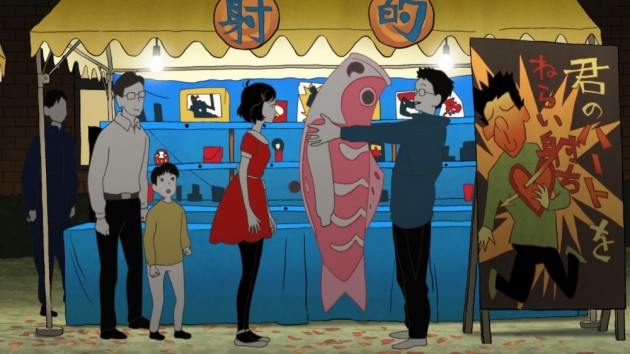
The Night is Short, Walk on Girl
Offscreen: Space in your work is never a fixed thing. It’s always warping and changing, but it always makes sense emotionally. In that sense, do you view space and reality as an entirely malleable thing that can bend to the power of emotions? Does animation help you in achieving that vision?
MY: Yes, I try to show the landscape that the characters see subjectively, not objectively. For example, if they see something which does not exist, I will make it appear, or if something vanishes in the environment, in space, I erase it. So, I think if things become less rigid, wavier, I think I see space like that. It’s intimately linked to emotions.
Offscreen: How do you view that relationship between space and character? Do characters influence the space with their emotions, or does the space and environment shape the characters?
MY: It’s very much the subjectivity of the character. Space is very different from what you would capture with a camera or in a more intellectual fashion. It’s through emotion that space changes.
Offscreen: It seems that with each new project you change or evolve your visual style. What was it like to return to a style you had already worked on with The Night is Short, Walk on Girl?
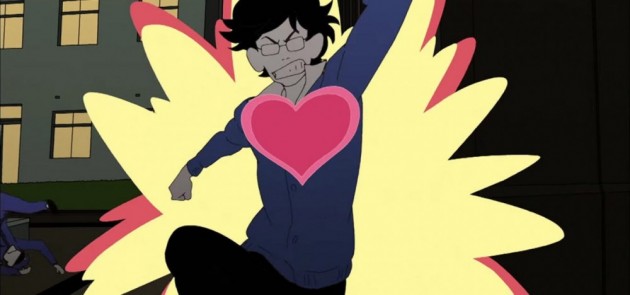
The Night is Short, Walk on Girl
MY: I’m not trying to always change my style. It depends on the story. This time, since Tatami Galaxy and Night is Short are adapted from the same author and they work like two parallel worlds, I tried to use a similar visual style.
Offscreen: Mind Game introduced us to a very fast-paced style that doesn’t shy away from using different animation techniques. On a practical level, is that your way of acknowledging that animation is a communal medium that is shaped by the voices of multiple animators?
MY: Even the world in which we live is filled with multiple facets. We can’t put it in a single image. There are many different people, many different things, so I didn’t want to put it through a filter to squeeze it into a single image. It shows a bit the world in which we live with many different people and perspectives.
Offscreen: Over your career, you’ve both adapted works and written your own screenplays. The two films you are presenting this year show those two different approaches. Is there a difference in how you approach both films?
MY: The process, the approach is the same. There is a text, whether I wrote it or someone else did, and I try to imagine the world in the text. When I work with another screenwriter, I try to find good points in that person and qualities which I don’t have and then showcase them.
Offscreen: Lu Over the Wall has been described more as a children’s film, while Night is Short has more adult themes. Do you think of a specific audience when you work on a film? Does it change your approach to the creative process?
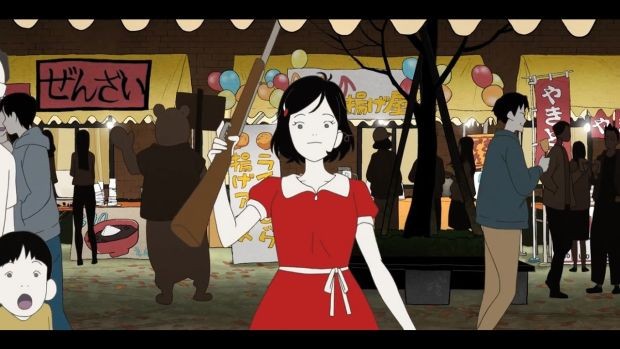
The Night is Short, Walk on Girl
MY: Yes, that’s right. I always try to think of the audience, but it doesn’t always work. For example, Night is Short was already a story for adults, so it was easier to adapt. Lu was originally for high school kids, but I also wanted younger kids to see it, so I tried to adapt it for them too. It’s true that sometimes I realize when working at certain moments that I have the vision of an adult. I try, but it doesn’t always work.
Offscreen: Last question. Now you are the boss of your own animation studio, you have become something of a mentor figure. What do you see as your future in the Japanese animation industry?
MY: I haven’t yet reached what I’ve wanted to achieve. For now, it’s to be in the flux of this animation industry and once I will have solid bases in this industry, I want to do something I really want to make. I make things I like to create now, but I would want to make something more.


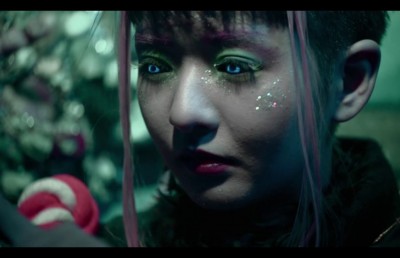
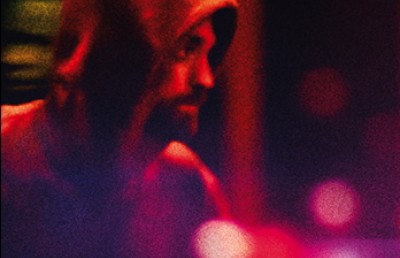
_400_258_90_s_c1.jpg)
